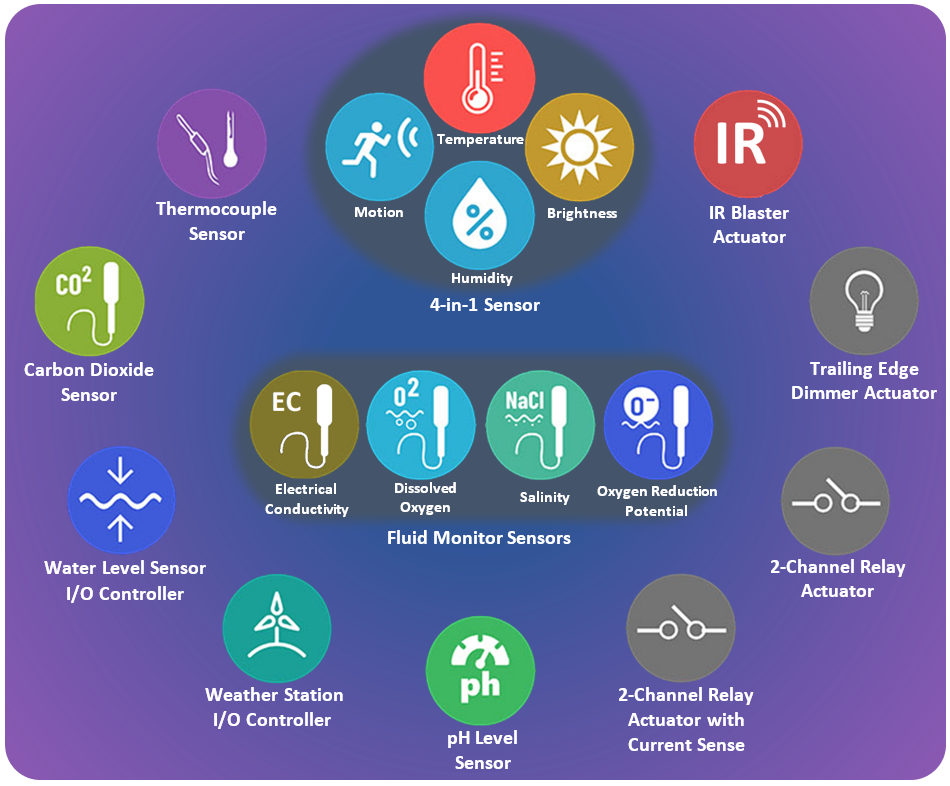Urban Farming with Bridgetek IoTPortal and Sensors
With the global population rising, there is a greater need for new and innovative means of food production to meet rising demands. One such innovation being developed to help address this problem is urban farming. Unlike traditional farms that cover vast fields, urban farms often utilise vertical space and are located within heavily populated areas and cities. As land availability is limited, urban farming provides an opportunity for farmers to grow crops in areas that would not have been possible before. There are numerous benefits to developing farms within urban areas that are now being realised, leading to more urban farms being established. Some of the key benefits include increased food security, fresher and better-quality crops and efficient use of land. However, there are also many challenges faced by farmers including resource scarcity, environmental conditions and sustainability. The introduction of smart technologies in farming can help farmers overcome these challenges. If a farm is efficiently controlled, resources can be managed effectively and optimal growing conditions can be maintained which in turn ensures a consistent yield and a sustainable process. The three key areas of technology that are vital to effective urban farming are the Internet of Things (IoT), cloud data storage and sensor technology. IoT allows device connection and intercommunication without the requiring human intervention. Devices may be located across a large farm, multiple farms in the area, or different parts of the world. This means that devices can be presented as part of a unified system, which is easily expandable, with access to data gathered by all devices. Cloud storage allows data to be stored on the internet instead of locally. The stored data can be collated and analysed in one place which is accessible from anywhere in the world across multiple devices. Sensor technology is critical to urban farming as they measure the important parameters used for the monitoring and control of the system. For example, if a moisture sensor detects a value below a predefined level, this could enable the irrigation system to water the crops in that area. For situations that require attention from an employee, an alert could be triggered locally via a warning light and remotely via a smartphone app.
Some of the key benefits of smart farming include:
• Consistent crop yield
• Better crop quality
• Reduced manual intervention allowing improved staff utilisation
• Constant monitoring and reaction to environmental conditions
• Alerting staff and management when conditions go outside pre-set limits
• Environmental considerations and cost savings from energy use
• Data gathering to help with future optimisations
The Bridgetek IoTPortal provides an ideal platform to take advantage of the benefits of smart farming and combines all of the technologies mentioned previously. The main components of the IoTPortal are the IoT Gateway, the Long Distance Sensor (LDSBus) and its cloud based monitoring dashboard and control service. Figure 1 shows an example of a smart farm using the IoTPortal and LDSBus infrastructure that could be employed within an urban location.

The system is based around the IoTPortal Gateway which offers hosting and management of the LDSBus and links to the system sensors and actuators, whilst forming a connection to the cloud service. A connected gateway can be graphically monitored in real-time showing the associated sensor data and actuator status. The data stored using the cloud service allows multiple gateways to appear as one network. This allows employees to view the data from the connected farms simultaneously using the on-site monitoring dashboard or remotely using the iOS or Android smartphone app. Each Gateway provides three LDSBus ports. The daisy chain architecture and common communication protocol make it easy to install and extend the system via HVT-Junctions. The HVT-Junctions connect applicable sensors and actuators to the main LDSBus. The LDSBus and accompanying HVT-Junctions can support up to 320 sensors or actuators from a single Gateway that also provides power to connected devices. The functionality of the cloud system provides data processing and allows the system to react to sensor inputs with pre-defined actuator outputs. Figure 2 shows some of a growing line of LDSBus-compatible sensors and actuators available from Bridgetek.

The Bridgetek LDSBus sensors and actuators can monitor several important environmental aspects and provide the appropriate output to maintain optimal growing conditions for crops. Some system control processes may include:
• Watering Systems
• Feeding systems
• Heaters
• Window and Vent actuators
• Window shades
• Fans
• Access Control
• Lighting for personnel
• Grow Lamps
Important parameters that can be monitored include:
• Soil Moisture
• Humidity
• Temperature
• Soil pH
• Sunlight Alerts (via SMS/Push notifications/E-mail) and via output actuators (warning lamp or bell)
• Environmental conditions (e.g. temperature outside of limits)
• Resource depletion (e.g. water reservoir)
• Intruder detection
